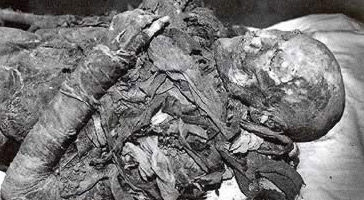Queen Hatshepsut

her name means the "Foremost of Noble Ladies" 1507–1458 BC . was the fifth pharaoh of the 18th Dynasty of Egypt.
She was the second historically confirmed female pharaoh, the first being Sobekneferu.
she is the daughter of king thutmosis 1st with his royal wife ahmose . her husband is king thutmosis 2nd who was the son of thutmosis 1st but not from the royal wife . they had only a daughter Neferure . but her husband thutmosis 2nd had a son thutmosis 3rd from a secondary wife .
when thutmosis 2nd died his son was only 2 years old . so Hatshepsut ruled the country with him . then became the sole ruler of Egypt foe around 20 years .
she claimed being the daughter of the god Amon . always represented herself on the walls of temples as a male ruler even with the royal beard . she made lots of commercial expeditions to the land of Punt , to bring frankincense and myrrh treas ,ivory , ebony & exotic animals .
during her rule she erected 2 obelisks at karnak temple one of them still standing and it's the tallest standing obelisk in Egypt . also on her 16 anniversary as a ruler she gave an order of erecting another 2 obelisks , never been done , one of them is an unfinished obelisk in Aswan , which later on helped the archeologists to know about erecting obelisks back then .
she had her wonderful mortuary temple on the west bank of thebes , El Deri el Bahari .
later on her step son thutmosis 3rd ascended to the throne of Egypt ,and ordered the chiseling of her names& figures from the walls of her temple .
her tomb
kv20 in the valley of the kings , the first tomb to be dug there , is the tomb of her father king thutmosis 1st , after his death and her ascention to the throne she gave a order to enlarge this tomb and place her sarcophagus there .
during the reign of thutmosis 3rd a new tomb bave been dug to thumosis 1st kv34 , during that time Hatshepsut's mummy might have been moved into the tomb of her nurse, Sitre In, in KV60.
kv20
The location of KV20 was known to the French expedition of 1799 and to Belzoni, who worked in the area in 1817.[1][2] A first attempt to excavate the tomb was undertaken by James Burton in 1824, who cleared it as far as the tomb's first chamber. then howard carter worked in the tomb
Its plan is of unusual shape, consisting of a series of five curving, descending corridors, two of which end in chambers. These corridors bend east-south-west in a clockwise fashion, which is a unique feature amongst the tombs in the valley.
The tomb has a total length of 210 meters.
some of a simple funerary furniture were found in the tomb
In 1903, Howard Carter stumbled found the tomb Unlike many of the Valley tombs, it was undecorated, It consists of a very rough flight of steps leading down top a passage of 5 meters long, ending in a low and rough square chamber, about 4 x 5 meters, which contained the remains of a much destroyed and rifled burial. Nothing was in the tomb but two much denuded mummies of women and some mummified geese."
Carter removed examples of the mummified geese, leaving two mummies and a coffin along with many other objects, and then reburied his find. He included neither a plan or a map in his notes. Later, Edward Ayrton investigated the tomb in 1906, taking the coffin and one of the mummies, after which he once again reburied the tomb. The mummy Ayrton removed was sent to the Antiquities Museum in Cairo, and was subsequently (tentatively) identified as Sitre In, the wet-nurse of Hatshepsut. This assumption was made because her coffin bore the name and title, royal nurse, In.
In early 2007, the tomb was reopened and the second mummy,This woman had very long hair, and was quite fat, with well worn teeth indicating that she died after a fairly long life. , removed for testing. On 27 June 2007, Supreme Council of Antiquities director Zahi Hawassoffered what he considered to be definitive proof that this "corpulent, elderly" body was indeed Hatshepsut. The mummy was found by CT scan to have one root of a missing molar. An unopened canopic box bearing the royal name of Hapshetsut was found by CT scan to contain a molar with one root missing. The size and shape of the root remaining in the mummy is claimed to fit the molar in the canopic box.





